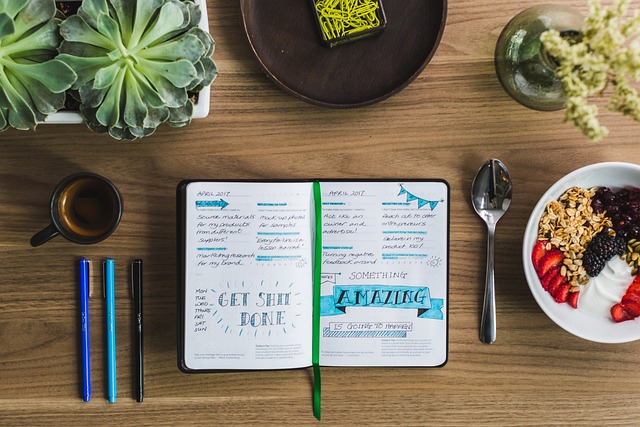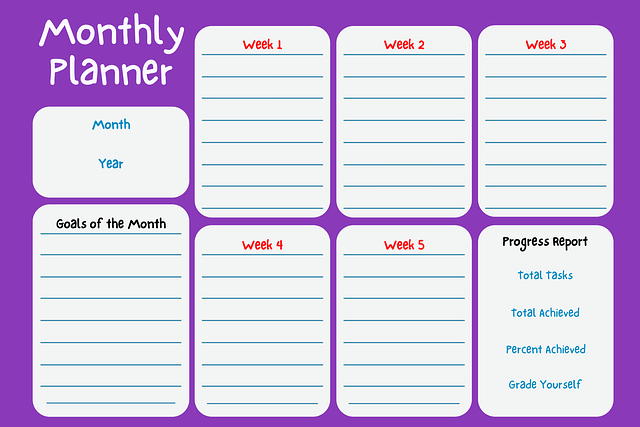In today’s busy world, staying consistent with workouts and nutrition can be challenging. That’s where a fitness and meal planner comes in—it acts as your personal roadmap to wellness. Whether you’re aiming to lose weight, gain muscle, or simply stay active, combining your exercise and nutrition plans is a game-changer for long-term success.
From tracking your daily meals to scheduling workouts that fit your goals, a fitness and meal planner can help you stay accountable, build healthier habits, and achieve real results. Let’s dive deep into how this simple tool can transform your life—one meal and one workout at a time.
Why You Need a Fitness and Meal Planner
Staying healthy isn’t just about hitting the gym or eating greens once in a while. True wellness comes from a consistent and balanced lifestyle. A fitness and meal planner bridges the gap between good intentions and daily execution.
1. Provides Structure and Routine
One of the biggest challenges people face is inconsistency. A planner offers structure by letting you:
- Schedule daily workouts
- Track meals and water intake
- Plan grocery lists in advance
This regular routine reduces stress and improves long-term adherence.
2. Helps You Set and Track Goals
Using a fitness and meal planner, you can set SMART goals (Specific, Measurable, Achievable, Relevant, and Time-bound). Whether it’s a weight goal, muscle gain, or eating more veggies, tracking progress visually keeps you motivated.
3. Keeps You Accountable
Seeing your progress written down can motivate you to stay on track. Whether it’s checking off a completed workout or logging a healthy meal, that sense of accomplishment boosts your confidence.
How to Use a Fitness and Meal Planner Effectively
A fitness and meal planner isn’t just a journal—it’s your strategy board for wellness. Here’s how to maximize its benefits:
1. Start with Clear Goals
Write down your main objectives—do you want to lose weight, build endurance, or just eat better? Be honest with your current habits and identify what needs improvement.
2. Plan Your Week in Advance
Dedicate a specific day, like Sunday, to plan the week ahead:
- List your meals for each day
- Schedule workouts based on your energy levels and availability
- Include rest days for balance
3. Track Daily Entries
Make it a habit to update your planner each day. This can include:
- Your meals (breakfast, lunch, dinner, and snacks)
- Calories or macronutrients (if needed)
- Your workout type, duration, and intensity
- Sleep quality and mood
4. Reflect Weekly
At the end of each week, assess your progress:
- Did you meet your goals?
- What could be improved?
- What worked really well?
Reflection builds self-awareness and fuels improvement.
Benefits of Using a Fitness and Meal Planner
Using a fitness and meal planner provides both physical and mental benefits. Let’s break them down:
1. Better Nutritional Awareness
Logging your meals regularly helps you:
- Understand portion sizes
- Identify patterns (like emotional eating)
- Balance macronutrients (protein, carbs, fat)
2. Improved Workout Consistency
You’re more likely to stick to a routine when it’s planned and written down. Skipping a workout becomes less likely when you’ve already committed to it on paper.
3. Enhanced Mental Health
Having a clear plan relieves decision fatigue. Plus, tracking sleep, mood, and hydration helps highlight how lifestyle choices impact your mental state.
4. Boosts Motivation
Visually seeing progress, whether in your fitness or eating habits, keeps you motivated and focused.
Best Tools for Fitness and Meal Planning
There are various ways to maintain a fitness and meal planner—choose the one that suits your lifestyle best.
1. Physical Planners
These include journals, notebooks, or printed templates. They provide a tactile experience and are great if you prefer writing by hand.
2. Mobile Apps
Apps like MyFitnessPal, FitOn, or Lifesum offer digital convenience with features like:
- Barcode scanning for food
- Workout libraries
- Reminders and notifications
3. Printable Templates
These are customizable and allow you to tailor your planner. Use them for:
- Weekly meal planning
- Grocery lists
- Daily workout logs
Meal Planning Tips for Success
A key part of your fitness and meal planner should focus on food. Here’s how to make meal planning easier:
1. Cook in Batches
Batch cooking saves time and prevents unhealthy food choices during busy days. Prepare protein, carbs, and veggies in advance.
2. Follow the 80/20 Rule
Eat clean 80% of the time and leave 20% for your favorite indulgences. This keeps your plan realistic and sustainable.
3. Include Variety
Avoid food fatigue by mixing up your meals. Rotate between proteins like chicken, tofu, or fish, and include diverse veggies and spices.
Fitness Planning Tips to Stay On Track
Make your workouts efficient and enjoyable with these tips:
1. Mix It Up
Incorporate cardio, strength training, flexibility, and rest days. This prevents boredom and overtraining.
2. Time Your Workouts
Find the time that suits your energy levels—some people thrive in morning workouts while others perform better at night.
3. Celebrate Milestones
Reward yourself when you hit a goal. It doesn’t have to be food-related—think new workout gear or a massage.
Common Mistakes to Avoid in Fitness and Meal Planning
Even with the best fitness and meal planner, mistakes can happen. Here’s how to avoid them:
1. Being Too Strict
Being overly restrictive with food or workouts can backfire. Flexibility is key to long-term success.
2. Skipping Rest Days
Rest is crucial for recovery and muscle growth. Always schedule rest and listen to your body.
3. Ignoring Portion Sizes
Even healthy foods can cause weight gain if portioned incorrectly. Use measuring cups or visual guides when unsure.
Sample Weekly Fitness and Meal Planner Layout
Here’s a quick example of how to organize your week:
| Day | Breakfast | Workout | Lunch | Dinner | Notes |
|---|---|---|---|---|---|
| Monday | Oatmeal + Berries | Strength (Upper) | Grilled Chicken | Salmon + Quinoa | 8 hrs sleep |
| Tuesday | Smoothie + Toast | Cardio | Turkey Wrap | Stir-fried Veggies | Felt energized |
| Wednesday | Scrambled Eggs | Rest Day | Tuna Salad | Chicken Stir-fry | Sore muscles |
Conclusion
A fitness and meal planner is more than a trend—it’s a lifestyle tool that brings clarity, motivation, and measurable results. Whether you’re trying to slim down, bulk up, or simply feel healthier, this planner bridges the gap between where you are and where you want to be.
Take control of your journey, build lasting habits, and enjoy the rewards of a healthier lifestyle—one entry at a time. Let your fitness and meal planner be your guide to living stronger, eating better, and thriving every day.
FAQs
What should be included in a fitness and meal planner?
A comprehensive fitness and meal planner should include a combination of elements that track both your physical activity and dietary habits. This includes workout plans with specific goals and routines, meal schedules that cover all your daily meals and snacks, hydration goals to ensure proper water intake, mood tracking to assess emotional wellbeing, and reflection notes where you can evaluate what worked and what needs improvement. Additional helpful features may include sleep tracking, grocery lists, and motivational quotes.
How do I stay consistent with my planner?
Consistency is key to seeing results from your fitness and meal planner. To stay consistent, set daily or weekly reminders on your phone or calendar. Choose a time each day—such as after breakfast or before bed—to update your planner so it becomes a habit. Use engaging tools like colorful pens, stickers, or digital apps that make planning enjoyable. Make sure your planner is accessible—whether that’s on your kitchen counter, in your gym bag, or on your phone. Finally, remember that perfection isn’t the goal—progress is.
Can beginners use a fitness and meal planner?
Yes, fitness and meal planners are especially beneficial for beginners. They help you establish structure, understand your habits, and track progress in a non-overwhelming way. For newcomers, planners can simplify complicated information like calories, macros, or exercise splits. Start with simple entries—like noting meals and activity levels—and expand your tracking over time. As you become more comfortable, you can add detailed elements such as training progress, meal prep notes, or mindfulness check-ins.
How often should I update the planner?
The most effective way to use your planner is by updating it daily. Logging your meals, workouts, sleep, and mood as they happen ensures accuracy and builds strong habits. Weekly planning is equally important—use a specific day (like Sunday) to lay out your upcoming meals, workouts, and goals. This routine helps you stay proactive rather than reactive, reduces stress during the week, and keeps you on track.
What if I miss a day or cheat on my meal plan?
Missing a day or having a cheat meal is perfectly normal—it’s part of being human. The key is not to let one off-track day derail your progress. A fitness and meal planner is designed to be flexible. Use those “off” days as learning moments—write down what triggered the cheat or why you skipped your workout, and use that information to plan better next time. The planner is a tool for growth, not perfection, so be kind to yourself and keep going.




